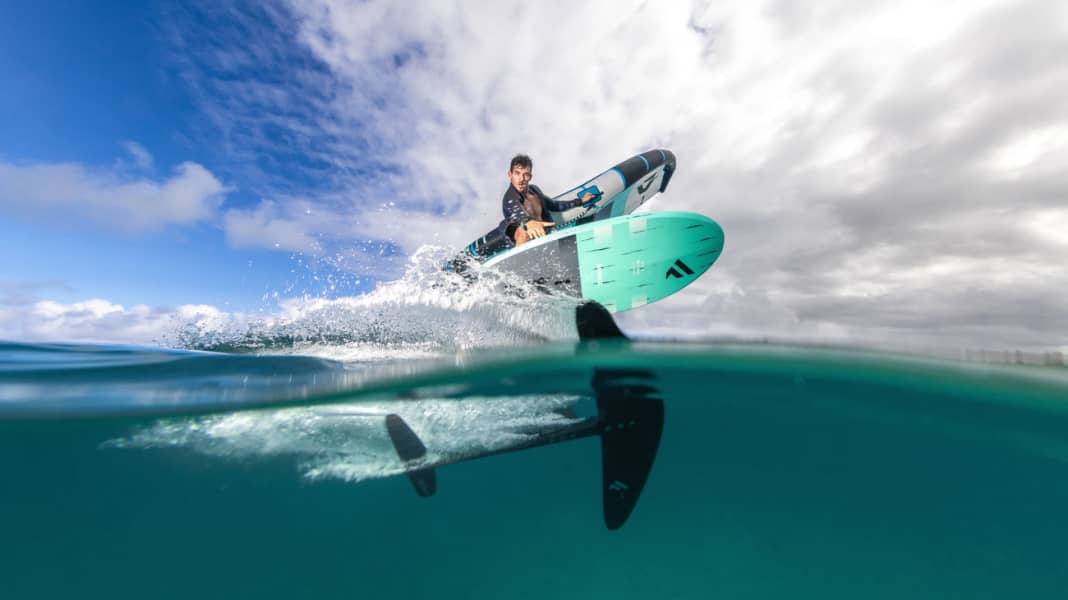
Given the many products on the market, finding the right foil is not easy, especially for beginners. For this reason, we will explain the general differences between the individual foil types below and tell you which foil size makes sense.
The foil - terms and basics
Before we briefly introduce you to the different foil concepts below, here is a brief overview of the parts and technical terms associated with the topic of foils:
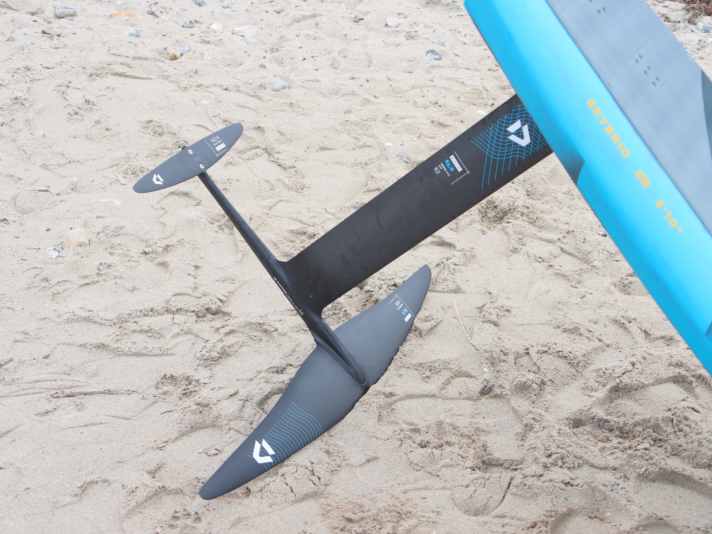
A foil consists of several individual parts, which have the following functions:
- Mast: Vertical connection to the board; made of carbon or aluminium
- Fuselage: (pronounced "Fjuslaasch"): Longitudinal beam on which the wings are mounted
- Front wing: Front wing, which generates the lift depending on the surface area and profile thickness
- Backwing: Rear wing that acts as a stabiliser
Foil mounting: double rail as standard
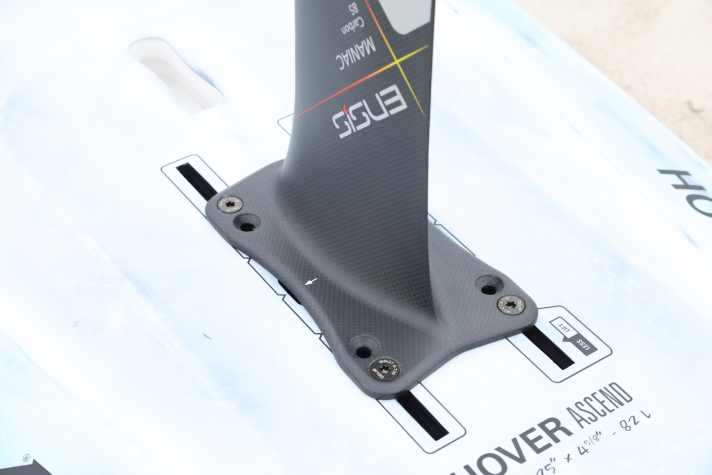
For wingboards, the double rail has become the standard mounting system, meaning that foils and boards from different brands are compatible and the position of the foil can be adjusted. We explain what you should look out for in the video:
How early a foil takes off, how fast it becomes and how easy it is to ride depends primarily on the front wing. Even if the transitions between the different types of foil are sometimes fluid, two general types of foil can be distinguished: "Low aspect ratio foils" and "High-aspect-ratio foils".
Cruiser & Surf-Foils ("Low Aspect Ratio")
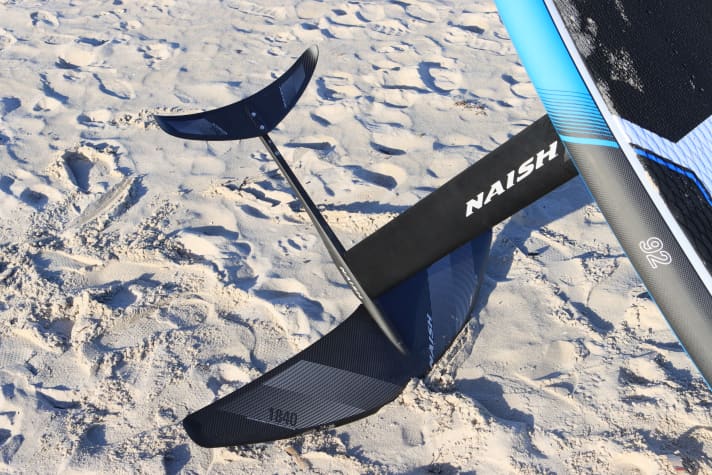
The term "low aspect ratio" is used across all brands for foils that are characterised by a smaller wingspan, but have very large and often thicker profiled wing shapes. This type of foil is often referred to in technical jargon as a "cruiser" or "surf foil" and has the following advantages and disadvantages:
Take-off even at low speeds
Stable inflow in manoeuvres, even at low speeds
Good flying through wind holes
Agile in manoeuvres to ride the waves
Slower due to the thicker profile
Less potential for jumps and freestyle tricks
This type of foil is therefore perfect for beginners to wingfoiling and for light wind areas such as inland lakes. Beginners ideally combine these cruiser foils with a long fuselage (>65 centimetres), which ensures a very stable flying position and is also forgiving of the occasional load error. Low-aspect foils can also make sense for experienced wingfoilers, e.g. if you are looking for an easy-turning foil for riding waves
Performance foils ("High Aspect Ratio")
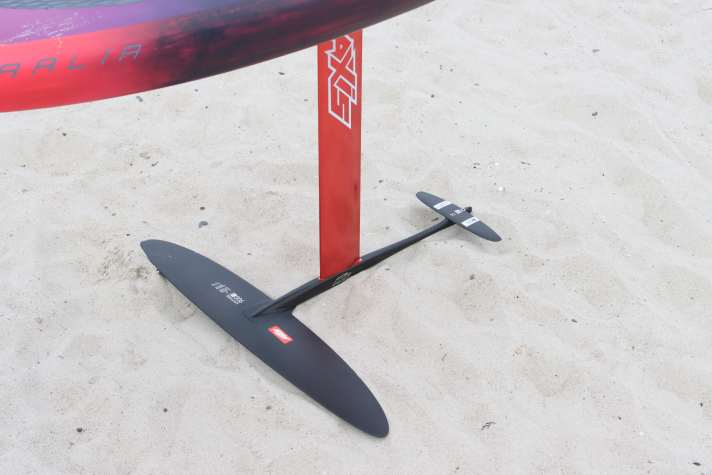
Behind the technical term "high aspect ratio" are powerful performance foils that are equipped with rather elongated wings and, above all, a thin wing profile. The transition from low aspect to high aspect is fluid in practice, but foils with more elongated wing shapes generally offer the following characteristics:
Higher speed potential due to the thinner profile, therefore often more potential for jumps and freestyle tricks
Better "glide" for riding small swells
Slightly higher lift-off speed required, but this can be compensated for with the appropriate pumping technique
Faster stall at low speeds
Partially more sensitive reaction to load and driving errors
This makes a high-aspect foil perfect for wingfoilers who already have some experience - but that doesn't mean that high-aspect foils are difficult to ride per se. They are ideal for downwinders, i.e. riding swell waves. But this type of foil can also offer advantages for jumps, fast manoeuvres and freestyle tricks.
The right foil size
The ideal foil size depends primarily on body weight and the wind range used. Most foil manufacturers now build modular systems in which, for example, front wings of different sizes can be easily exchanged. The following recommendation should only be understood as a rough guide and refers to Wingsurferwhich with only one front wing want to cover as wide a wind range as possible:
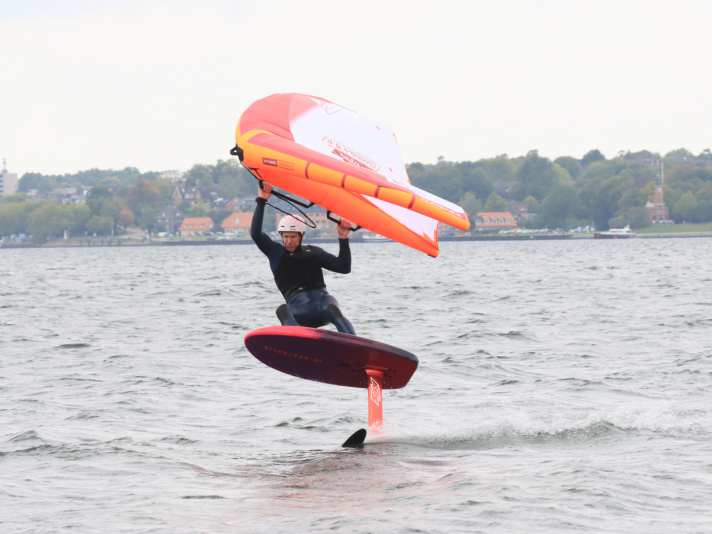
Newcomers or wingsurfers who value absolute light wind performance are best off with the following front wing sizes:
| Body weight | Area in cm2 | Ideal wind range |
| <70 kilos | 1300-1700 | 8-15 knots |
| 70-85 kilos | 1500-2000 | 8-15 knots |
| >85 kilos | 1700-2400 | 8-15 knots |
Experienced wingsurfers who want to try their first jumps and tricks should ideally use the following frontwing sizes:
| Body weight | Area in cm2 | Ideal wind range |
| <70 kilos | 900-1300 | 10-20 knots |
| 70-85 kilos | 1000-1400 | 10-20 knots |
| >85 kilos | 1200-1700 | 10-20 knots |
How the length of the fuselage influences the driving characteristics
The length of the fuselage (longitudinal beam on which the wings are mounted) has a massive influence on the handling characteristics. The following applies: short fuselages make the foil easy to turn and manoeuvre - ideal for riding swell or surf waves and making tight hooks, for example. Long fuselages ensure stable directional stability and forgiving behaviour. This means that beginners and intermediates should choose foils with fuselages that are at least 65 centimetres long. Such long fuselages are also an advantage for fast heating. Experienced freestylers and wave fans, on the other hand, can make their foils noticeably more agile with short fuselages (55-65 centimetres), but accept less stable flight behaviour in return.
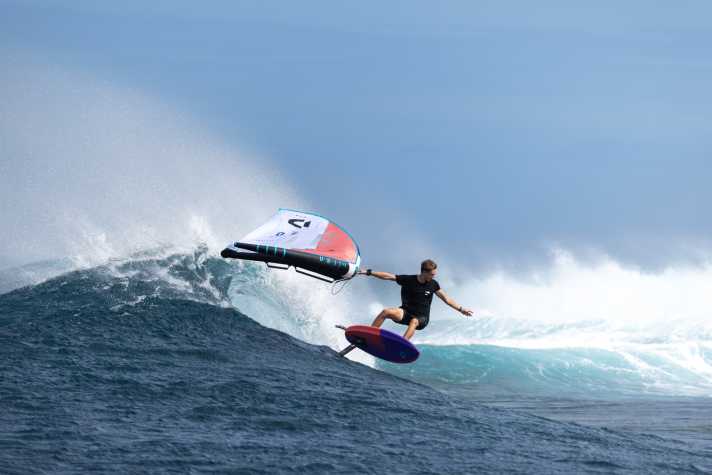
The right mast length for wingfoiling
Most foils are supplied with masts between 75 and 85 centimetres in length, which is ideal for learning. Different dimensions can make sense for beginners or for wingfoiling in the waves. If you have any questions, you can get HERE all the answers on this topic.

